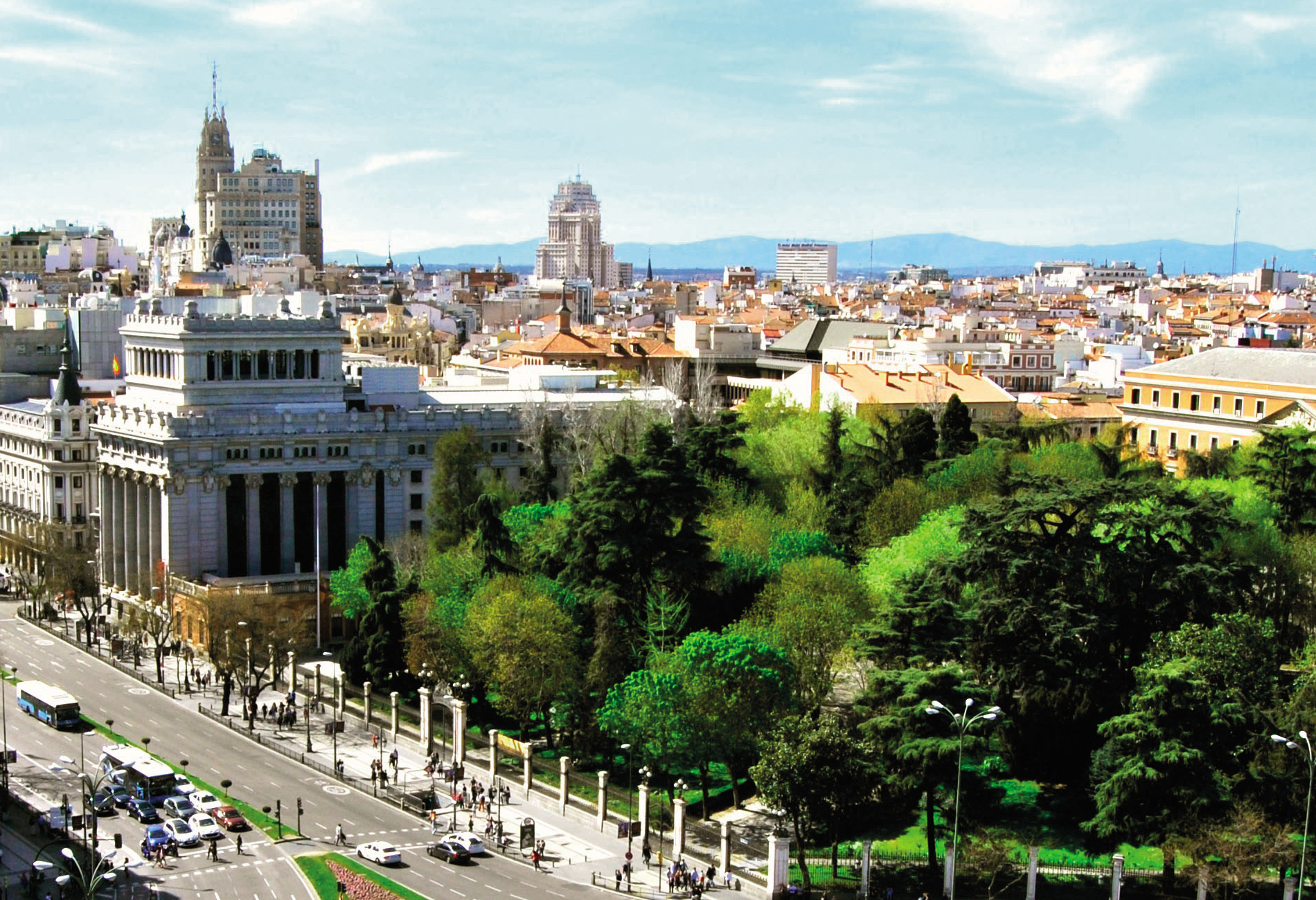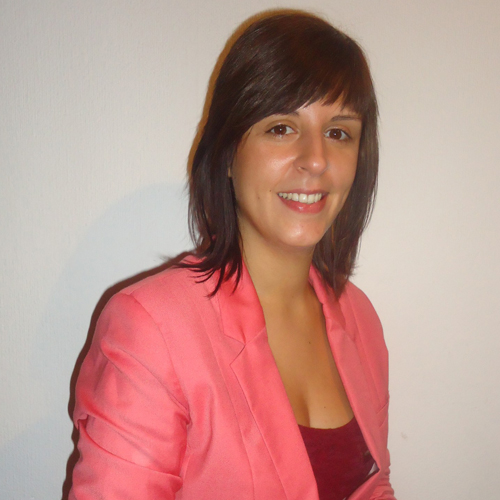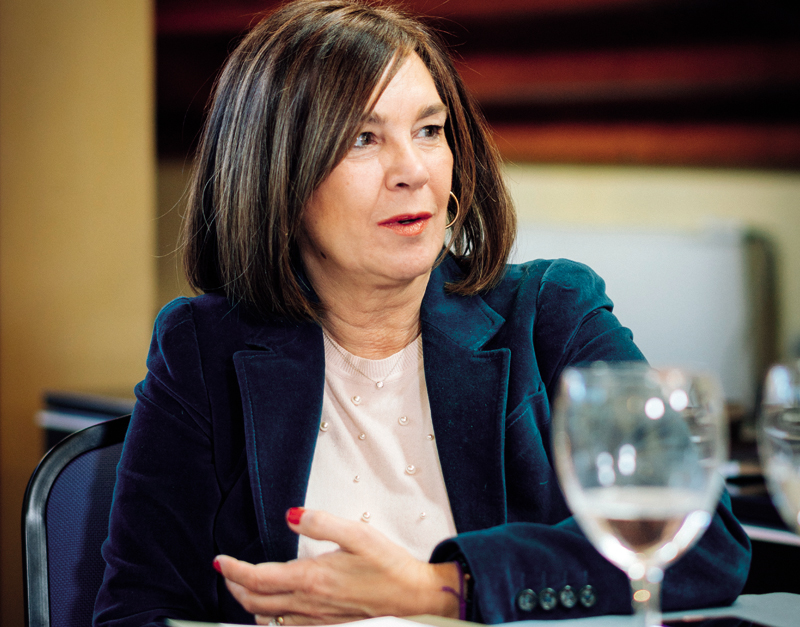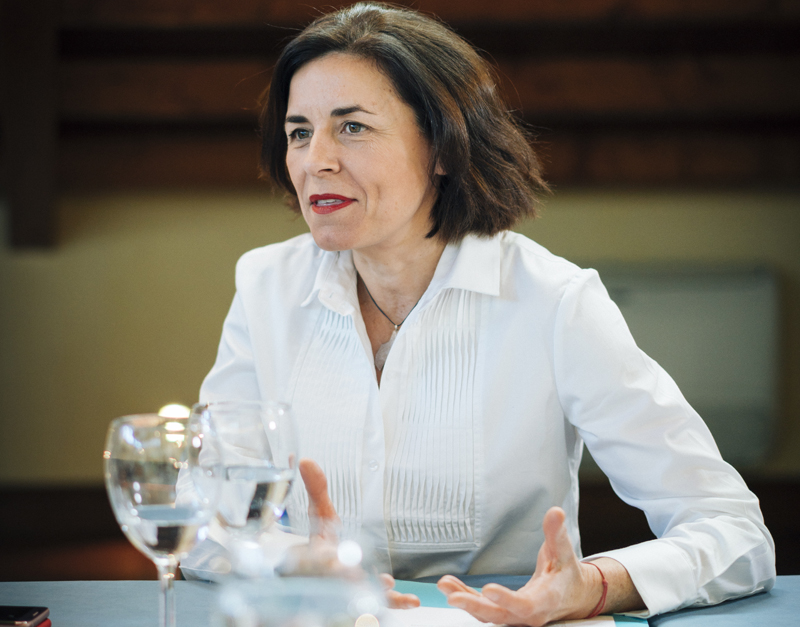We got together with four Madrilenians from the fields of architecture, literature, fashion and winegrowing. They love their city and even though they weren’t all born in Madrid, they have such admiration and respect for Spain’s capital.
Mohammed I founded Madrid –at first called Magerit– in the year 852. In 1085, King Alfonso VI’s forces set out to take the town. One of the soldiers began to climb the wall, plunging his dagger into the spaces between the stones. He scaled the wall so agilely that his fellows said he looked like a cat. Once the fighting began, the soldier ran to the tower, took down the Moorish flag and set up the Christian banner. In remembrance of this feat, people who are born in Madrid are known as ‘cats’ and especially Madrilenians as from the third generation, like Charo Izquierdo, one of the people invited to take part in our round table: “I’m proud to be a ‘cat’ – a grand-daughter and daughter of Madrilenians”.
Although it may be hard to believe, it’s very difficult to find a ‘cat’ in Madrid today because this is one of the most welcoming cities that exist. “As I South American”, Carmen Posadas says with a laugh, “I like to emphasize the multicultural aspect of Spain, which is something relatively recent. When my family and I first came here, we were like the “rich uncle from the Americas”: we had a big car because my father was a diplomat and excited kids would run merrily behind it”, she recalls. “In this once provincial city, a sort of ‘big bang’ took place not long ago and there began to arise a Madrid of the Moroccans, a city of the Chinese, one of the English, another of the Ecuadorians and so on. Each one is completely distinct and this is something new”. So much so that Carmen intended to write a book called “Around Madrid in 80 Worlds”. “It’s a very open city where nobody asks you where you’re from and it doesn’t even matter whether or not you speak Spanish”, adds Carlos Falcó.
This melting pot of cultures has turned the Madrilenians into amiable people who enjoy receiving visitors so they can talk about their city to them. “There’s a good relationship with people from out of town”, affirms Lamela. “The fact is that once you’ve been in Madrid for ten minutes, you become just another citizen. In other cities the inhabitants take longer to open up but Madrid has never lost this habit despite the great influx of people”, says Posadas. “The Madrid-born inhabitants are in the minority but they’re very open. The city doesn’t play identity games with chromosomes and genes – it’s just a tremendously friendly place” adds Falcó, who was born in Seville.
For Lamela, the designer of big projects like the airport’s T4 terminal, Madrid is a compact city. “It’s quite small considering its number of inhabitants so it’s easy to get around. The airport’s just 10 minutes away from any point in town and what’s more, it’s cheap here. A 500€-a-night hotel in London or Paris has its equivalent in Madrid for 150€, and instead of paying 100€ for a meal, you can spend 20€ and eat quite well”, he goes on to say.
For Falcó, Madrid has got it all and its future is as bright as it can be: a fantastic cultural, musical and theatre offering; excellent weather, Europe’s best infrastructures… On top of all that, in spite of the economic crisis, it has grown year by year and is now a city under transformation that is more focused on tourism and more concerned with sustainability issues, explains Izquierdo. “It’s probably Europe’s fourth leading city”, she adds. “Madrid is brimming with culture: together with Germany, it has the most important museum cluster, it’s a fun city and it has a great culinary wealth”, she points out. Indeed, our four guests think Madrid smells and tastes like food: Madrid-style stew, for Lamela; suckling pig and wood-fired ovens, according to Posadas; and ‘churro’ fritters for Izquierdo.
Falcó, on the other hand, thinks it has a scent of strawberry trees, beech and holm oak because of the region’s rich ecosystem. “I’m a farmer, ecologist and gardener, and in Madrid there are all sorts of landscapes... Beech groves, deciduous woods, holm oak stands, pine forests… and even more rugged areas typical of La Mancha”, he comments. But it also has a cool fresh smell of mimosas. Madrid is Europe’s greenest capital with its tree-lined streets and avenues, and it is the one that stands at the highest altitude, too (600-700 m.), so its air is clean and its sky is a very bright blue. “The dusks in Madrid, which Velázquez and Goya painted, and the shape of the clouds… I haven’t seen anything like them anywhere else in the world”, confirms Posadas.
For Izquierdo, there is always a moment in the year when the city suddenly fills up with birds and takes on its characteristically green colour. “Madrid was made the capital of Spain mainly because it’s near the natural park of El Pardo, where the kings loved to hunt, so the city stands in close relation to nature”, points out Lamela. “What’s more, it’s right next to the Sierra, a range of such tall mountains that we could even hold Winter Olympics here if we wanted!”, he adds. There’s a Madrid to be discovered for each time of the year. “In the spring there’s the Botanic Garden, and the museums are great, too. But if you’re here for just a day, the streets are the thing, in the Literary Quarter or the Hapsburg Quarter. It’s a city to be strolled through and felt”, says Izquierdo.
The good thing about a compact city like Madrid is that all the emblematic places are close by, Posadas points out: “The Reina Sofía, Thyssen and Prado museums, El Retiro park… You can see all the main sights of Madrid because they’re only 300 metres from one another, at most”. Lamela goes on to say, however, that you can’t appreciate all the museums in one day so he suggests taking just a quick look at some of the main ones, without neglecting a few of the lesser known places like the Archaeological Museum and the Costume Museum. It should be kept in mind that you could easily spend a whole week in Madrid just looking at museums. “A great idea is to drive up Atocha to the Royal Palace and Plaza de Oriente, then to the Plaza Mayor and Puerta del Sol, and turn onto San Jerónimo to see the prettiest part of town. Next go down La Castellana and see the Salamanca Quarter and Ortega y Gasset… Football fans can finish up by touring the Santiago Bernabéu”, suggests Lamela.
In any case, every Madrilenian –‘cat’ or not- takes pride in forming part of the city’s history. “I’m proud to be a Madrilenian by my own free will”, states Posadas. “Everybody wants to study in Spain because Madrid is known as a fun city that never sleeps. For young people it’s almost a must”, she says. “It’s the capital of Spain and of the Hispanic world; we share a common language with South America and that’s a very important thing. It’s fabulous to take a plane, fly 10,000 km and then be able to keep speaking Spanish! Only when you travel do you actually realize how lucky we are and how we’ve improved”, reaffirms Lamela. “In Spain we’ve got one million hectares of grapevines so we’re the world’s biggest vineyard. And we’ve also got 2.5 million olive trees, almost half of all those on our planet, which makes us very fortunate as well”, comments Falcó. “Yes, and we’re also very lucky to have two such important and different cities as Madrid and Barcelona”, concludes Lamela. And that’s a fact.
Photos: © Daniel Torrelló







